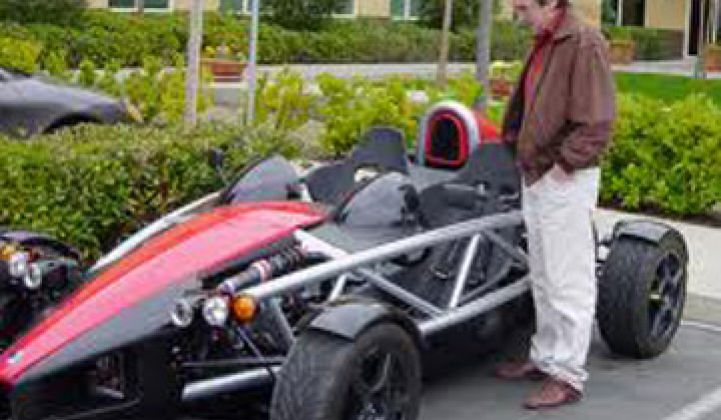What do medium-duty trucks and high-performance sports cars have in common?
They both require sudden bursts of power.
WrightSpeed, the electric sports car company founded by Ian Wright (listed as one of the five Tesla founders in the sometimes revisionist history approved by Tesla), has raised $5 million from an unnamed investor to help develop a range-extender for trucks and sports cars. With Wright's technology, an electric motor charged by batteries would propel the vehicle down the road and the onboard gas engine serves as a generator to charge the batteries.
Ideally, the architecture allows car makers to minimize the size of both the gas engine and the battery pack. A single 40-pound electric motor could provide 250 horsepower and multiple electric engines could be inserted into a single vehicle. The technology could save 3,000 gallons a year with a single vehicle.
WrightSpeed was founded by Ian Wright, an engineer and sports car enthusiast from New Zealand. He split away from Tesla in the early days to concentrate on supercars, like the all-electric X-1 featured in the video I shot at my last job below. (He wouldn't let me drive it, but it was a blast to be in the passenger seat and all of Burlingame stopped to stare.) He's also tinkered with a follow-on to the X-1 that could go from zero to 60 miles per hour in 2.5 seconds, which would make it the fastest car in the world.
In 2007, Wright tweaked the business and began to explore the opportunities for electric drive trains for hybrid trucks and vans. If you drove a truck for five years and averaged 25,000 miles a year, he told me back then, you'd spend $50,000 in gas if the truck got 10 miles per gallon and gas averages to $4 a gallon. A plug-in hybrid in optimal conditions in the same period could do the same on $6,000 worth of electricity.
It's taken some time to raise money, but here you go. Interestingly, PowerGenix, the nickel zinc battery maker, today said would begin to produce batteries for micro-hybrids, small electrical systems that help a car go from zero miles per hour to cruising speed. In some ways, Wright's technology and micro-hybrids accomplish the same thing: electric power takes care of acceleration, while the gas motor works when average power is required.



